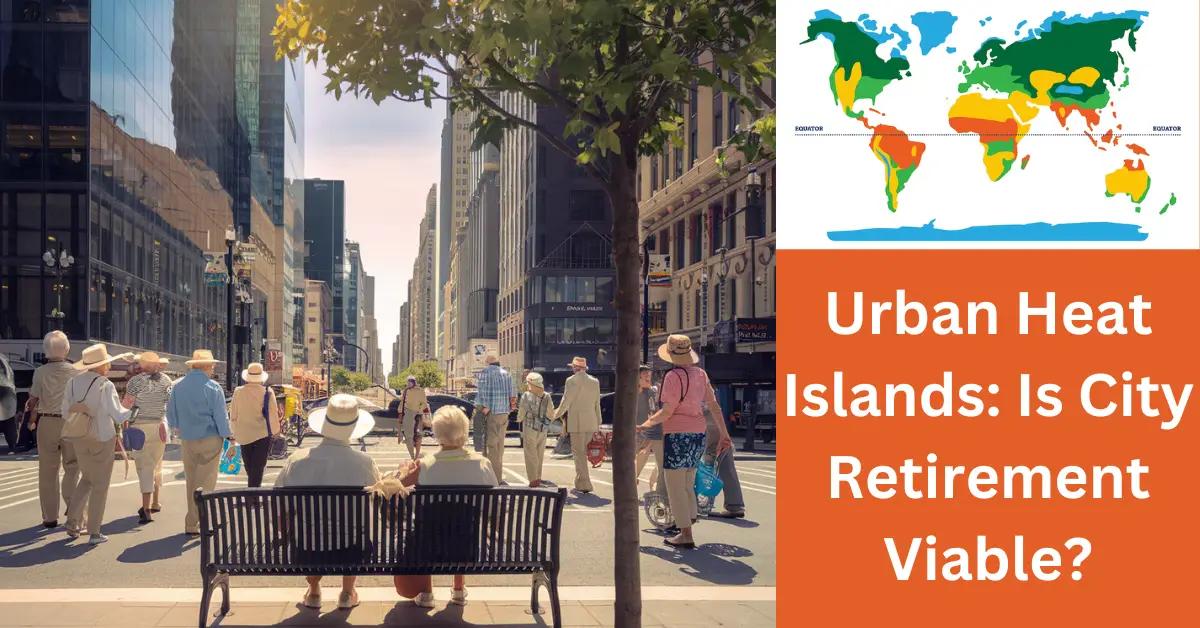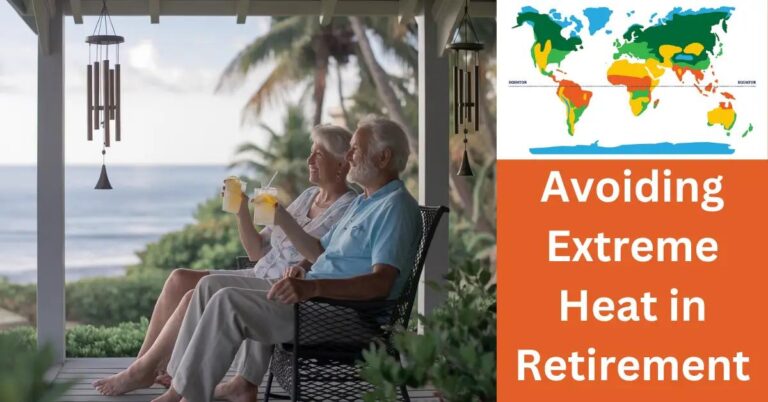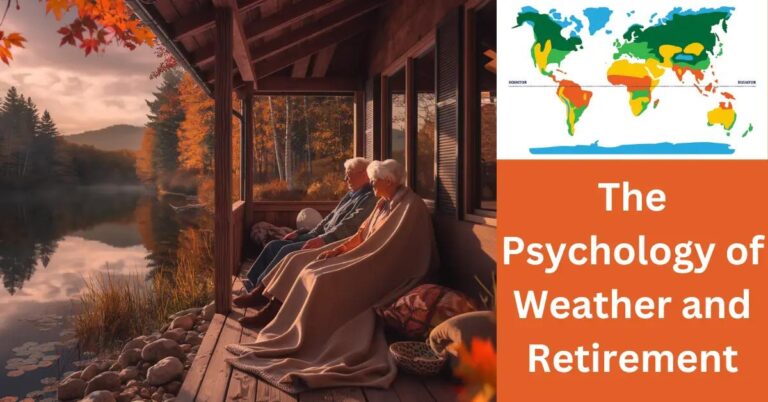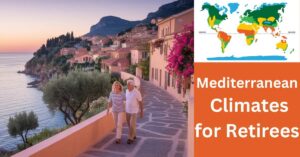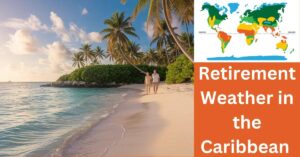TL;DR:
- Urban Heat Islands (UHIs) cause city temperatures to rise up to 7°F, posing serious health risks for retirees.
- Older adults face increased heat-related health issues like dehydration, heatstroke, and respiratory problems.
- Heat worsens air pollution, making breathing difficult for seniors with pre-existing conditions.
- Strategies to mitigate impact include health monitoring, air conditioning, cooling centers, and urban planning.
- Trees, green spaces, green roofs, and cool pavements help cool cities down.
- Successful examples include Los Angeles' Cool Roofs Ordinance and Paris’ green roofs.
- City retirement offers benefits but requires consideration of UHI effects and city adaptability.
- Cities can enhance retiree living through access to services, green spaces, and community engagement programs.
City life has its charm, but what about when temperatures soar? Urban heat islands can make cities feel like ovens, and this poses a real question: Is city retirement viable? I dove into this topic to unearth the impacts of urban heat islands on health, especially for older adults. From understanding the causes to exploring senior-friendly solutions, let's discover if city life can still be cool for us retirees.
What are the Impacts of Urban Heat Islands on Health for Retirees?
Urban heat islands (UHIs) make cities hotter than rural areas. How do urban heat islands affect cities? Urban areas heat up more due to concrete, less greenery, and heat from cars. This extra heat modifies city climates, often leading to higher temperatures by up to 7 degrees Fahrenheit. The consequences of living in an urban heat island are significant, especially for older adults.
Older bodies lose the ability to cool themselves efficiently. UHIs strain their systems, worsening conditions like heart and lung problems. The effects of urban heat islands on health include dehydration, heatstroke, and more hospital visits. How can we measure this impact? By looking at public health data, we see higher illness rates during hotter months.
Heat makes pollution worse, and hot air in cities can trap pollutants. This makes it even harder for seniors to breathe. The elderly are at risk of respiratory issues since they often have existing health concerns. Data gathered over summers shows increased rates of heat-related illnesses and deaths among retirees.
To safeguard senior health, monitoring is key. Health professionals track temperature changes and hospital visits. These experts use this data to warn the public and plan city responses. Cities can place heat sensors to get accurate data on hot spots. This helps in creating targeted alerts for vulnerable communities.
Keeping seniors cool is crucial. Air conditioning or fans can help but increase energy use. Community centers can serve as cooling stations where the elderly find relief. We need to look at strategies for better monitoring and intervention. Urban planners must design with older adults in mind, making sure that everyone can stay safe and comfortable.
In short, urban heat islands pose serious risks for retirees. We need well-planned cities and vigilant health monitoring to combat these challenges.
Urban Heat Islands: Is City Retirement Viable?
Urban heat islands make city living hot, especially for seniors. These areas are warmer than the surroundings, thanks to buildings, roads, and lack of trees. Retirees face a big problem with heat islands: higher heat can cause health issues like heatstroke.
To reduce the urban heat island effect, cities need to plan smartly. Green spaces are important. Parks, trees, and gardens cool the area and make it more enjoyable. Cities should prioritize these in urban planning for seniors. Trees not only give shade but also improve air quality and reduce city noise.
What are the problems with the urban heat island? The main issues are high temperatures, more pollution, and uncomfortable living spaces. These can lead to heat-related illnesses. Seniors are at greater risk since they might have health conditions or struggle to cool down.
How can cities plan for seniors to fight the heat? They can create better living spaces designed for comfort. Designing retiree-friendly cities means ensuring easy access to healthcare, parks, and cooling centers. Sustainable urban living for retirees involves creating cool spaces that encourage easy walking and socializing.
Some cities are already good examples. Urban areas that prioritize sustainable living offer cooler and more senior-friendly environments. They include wide sidewalks, shade structures, and water features that seniors enjoy.
Incorporating seniors' needs in city plans starts with recognizing their unique challenges. By focusing on heat island effect reduction, cities become more inviting and safe for retirees. This includes planting more trees, building parks, and integrating cooling solutions.
When urban planners prioritize these aspects, cities can adapt to climate change better. Retiring in the city becomes more viable and enjoyable. Retiree-friendly cities promise not just a home, but a healthy, comfortable lifestyle amid urban challenges.
What are effective cooling strategies for urban areas?
Cities often become hot when sunlight heats roads, buildings, and more. This creates what we call urban heat islands. These islands make cities warmer than their surroundings. So, how can we cool down our urban spaces?
To reduce the urban heat island effect, we need cool strategies. One method uses urban cooling technologies. Think of it as giving your city a giant shade! Green roofs are plants grown on top of buildings. They absorb sunlight and help keep things cool. Cool pavements are another trick. These are surfaces that reflect sunlight instead of soaking it up. When cities use these technologies, temperatures can drop.
Policies play a big role in reducing urban heat. Some cities support heat reduction through special laws. These may require green spaces and energy-smart building designs. For example, in Singapore, city planners encourage planting trees and creating parks. This provides shade and cools city air.
Let's talk about some successful examples. In Los Angeles, there's the Cool Roofs Ordinance. It makes buildings use reflective roofing to bounce back sunlight. In France, Paris uses public cooling centers. These are places where people can escape the city’s heat. Other cities use cool corridors, shaded paths to walk in comfort.
Innovations help fight heat too. Green roofs, like I mentioned, do a great job. They offer shade, improve air quality, and even provide habitat for wildlife. Public cooling centers help folks chill during hot days by offering air-conditioned spaces.
For more detailed reading, you can check various guides about urban cooling strategies, like the one provided by Climate Central, a trusted climate research group. Cities around the world learn from each other and constantly find new ways to stay cool. By sharing and applying the right strategies, we can make urban living better and more comfortable.
Urban Heat Islands: Is City Retirement Viable?
Retiring in a city offers many benefits, even with the heat islands. A major benefit of city living is access to services. Everything is close by—shops, doctors, and public transport. This makes it easier to stay active and engaged.
Cities also provide cultural attractions. Museums, theaters, and restaurants offer endless opportunities. This makes city life exciting and enriching. For retirees, staying socially active is important. Cities foster community engagement through various clubs and events.
Yet, urban heat can pose challenges. Cities often trap heat, making them warmer. But many cities work hard to adapt. Some have introduced more green spaces and trees. Green areas help reduce heat and improve air quality.
Case studies show successful city adaptation to climate change. New York City, for example, plants more trees to cool the streets. Paris has green roofs and reflective pavements. These changes benefit all, including retirees.
Retirees can enjoy a city's vibrant life while staying cool. Many cities open public cooling centers in summer. These centers provide a cool place to rest and connect. Such adaptations show a city’s commitment to its residents.
Lastly, cities help improve life quality through community programs. Volunteering and workshops are common. Retirees can learn new skills or help others. Engaging in these activities keeps minds sharp and spirits high.
In choosing city retirement, think of all the benefits. The right city can enhance your golden years, offering plenty of chances to live fully and happily. Remember, each city plans uniquely for seniors. Look at City Retirement Benefits, and choose your best fit.
Conclusion
Living in a city with urban heat islands poses health risks, especially for retirees. Understanding these heat effects helps us plan better, making cities more retiree-friendly. Through careful urban planning, cities can reduce heat impacts. Useful cooling strategies, like green roofs and cooling centers, offer relief. Despite challenges, city life offers rich amenities and community engagement. Retiring in a city remains attractive due to convenience and social offerings. By preparing and adapting, retirees can enjoy vibrant urban living while staying safe and comfortable.

